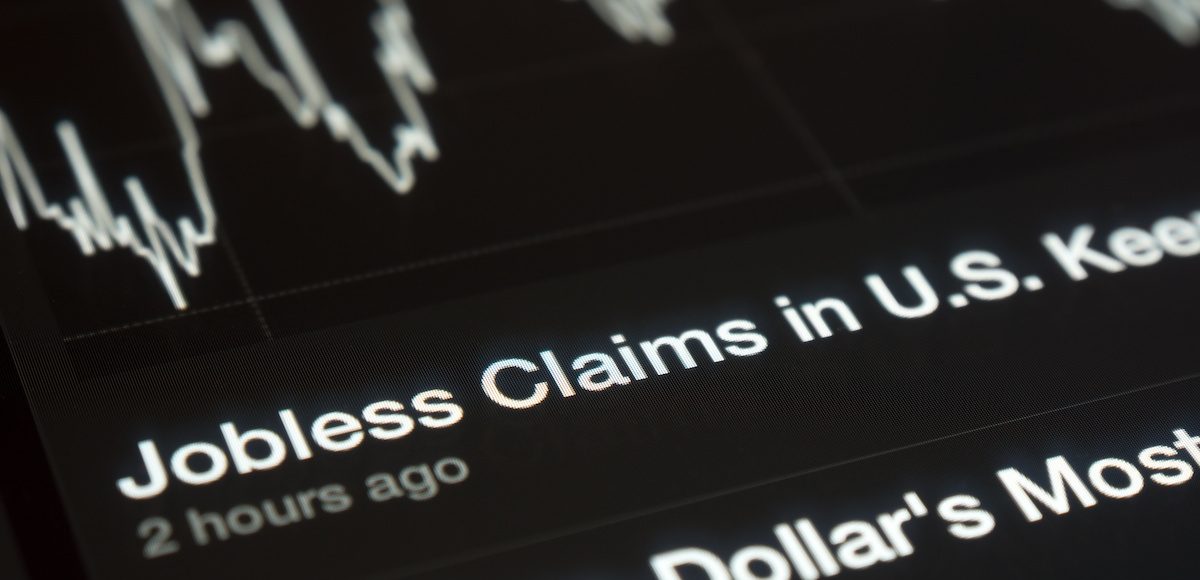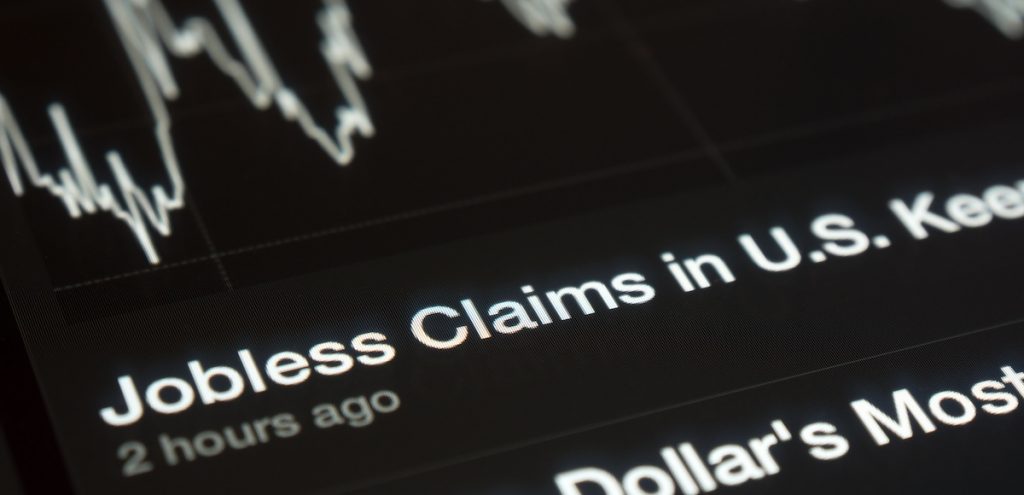

U.S. jobless claims graph on a tablet screen.
The U.S. Labor Department (DOL) said first-time jobless claims rose 11,000 to a seasonally adjusted 234,000, more than the 220,000 median forecast. The previous week’s level was revised up by 1,000 from 222,000 to 223,000.
The 4-week moving average was 219,750, an increase of 6,250 from the previous week’s revised average. The previous week’s average was revised up by 250 from 213,250 to 213,500.
Claims taking procedures in Puerto Rico and in the Virgin Islands have still not returned to normal and extended benefits were payable in the Virgin Islands during the week ending May 5.
The advance seasonally adjusted insured unemployment rate was 1.2 percent for the week ending May 12, unchanged from the previous week. The advance number for seasonally adjusted insured unemployment during the week ending May 12 was 1,741,000, an increase of 29,000 from the previous week’s revised level.
The previous week’s level was revised up 5,000 from 1,707,000 to 1,712,000.
The 4-week moving average was 1,751,750, a decrease of 23,250 from the previous week’s revised average. This is the lowest level for this average since December 15, 1973 when it was 1,735,750. The previous week’s average was revised up by 1,250 from 1,773,750 to 1,775,000.
The highest insured unemployment rates in the week ending May 5 were in the Virgin Islands (4.3), Alaska (2.9), New Jersey (2.1), California (1.9), Connecticut (1.9), Puerto Rico (1.9), Illinois (1.6), Pennsylvania (1.6), and Rhode Island (1.5).
The largest increases in initial claims for the week ending May 12 were in Missouri (+3,852), Kentucky (+2,980), Alabama (+1,082), Michigan (+660), and Mississippi (+326), while the largest decreases were in Pennsylvania (-1,378), Ohio (-1,247), New York (-1,004), Arizona (-512), and Oregon (-434).






MaxPointy / May 24, 2018
To be fair most of the people who lost jobs were government employees, so it doesn’t matter.
/
Texans 4 Trump / May 24, 2018
Anyone not working in this economy is choosing not to work. Period
/